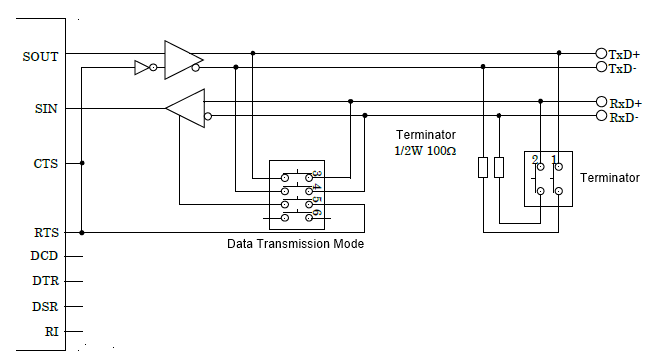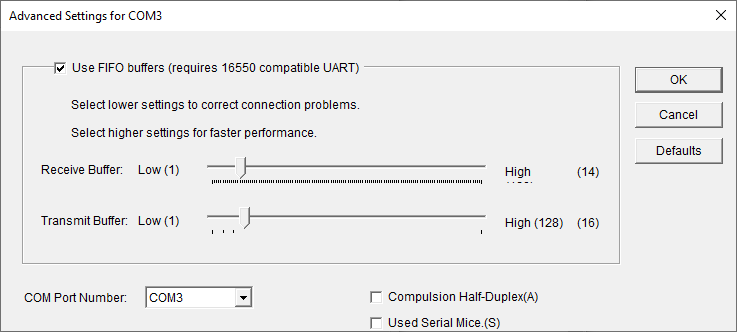
Half-duplex communication is a way of communicating while switching
between transmission and reception using one transmission line.
Therefore, it is not possible to transmit and receive at the same time
as full-duplex.
However, the way of communicating with multiple devices using both multidrop
connection and half-duplex communication is widely used.
Especially in the case of RS-485, there are many cases where the communication
distance is long.
For this reason, this way which allows only one transmission line, can
be expected to reduce the amount of wire installation work and reduce
the cost of electrical materials.
On the other hand, the communication LSI (Large Scale Integration) chip
installed in the device on the PC side is designed on the premise of full-duplex
communication.
For this reason, our company adopts a technology that realizes half-duplex
communication by changing the RTS output signal and not receiving the
message sent by the own station in the receive buffer of the own station.
The CPU load can be reduced, the risk of missing telegrams can be reduced,
and stable communication can be expected.
Both hardware and software settings are required for half-duplex communication with our devices.
In the hardware settings, the RTS (Request To Send) output signal on
the LSI chip is input to CTS (Clear To Send), and RxD (Receive Data) is
gate controlled.
If necessary, enable the Terminator (terminal resistor) to prevent unwanted
signal reflections.
Hardware specifications and how to set the hardware differ depending on the device used, so please refer to each manual.
Reference circuit : For COM-4PDHN-USB

After hardware setting to half-duplex communication, it is necessary
to change the RTS output signal with appropriate timing by software.
The method for setting the timing of the RTS output signal depends on the
software you are using.
For details, refer to Tutorial/RS-485 communication.
Reference software settings: COM property
advanced settings (When the half-duplex setting is enabled, the RTS output
signal is automatically controlled)
